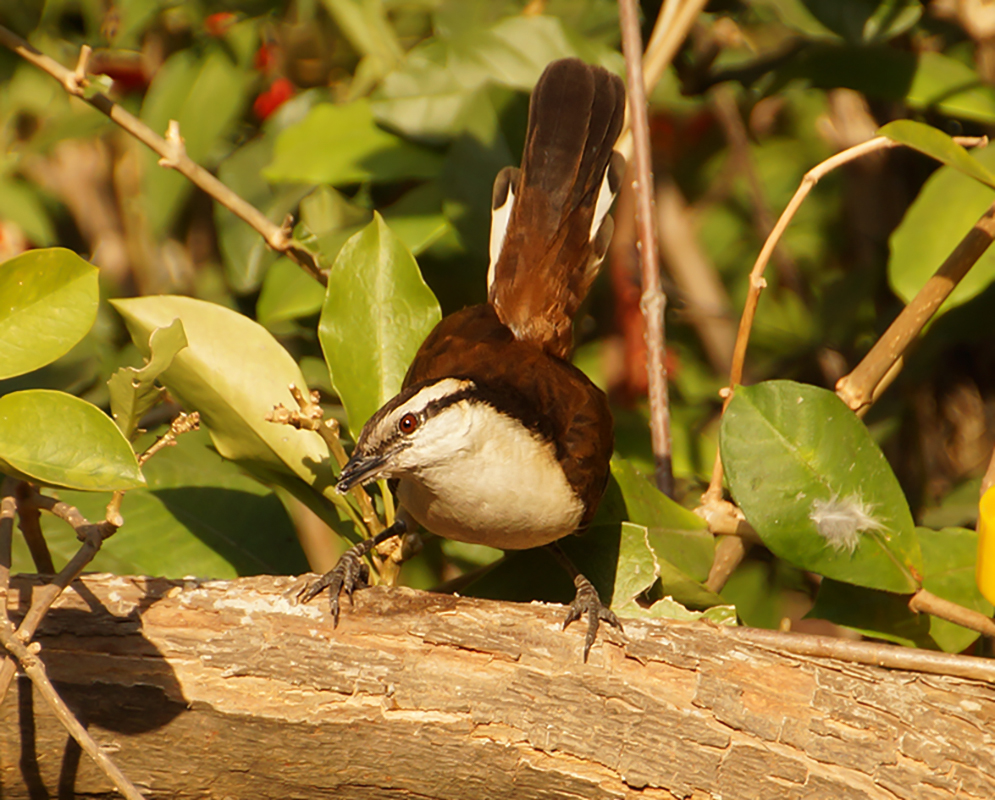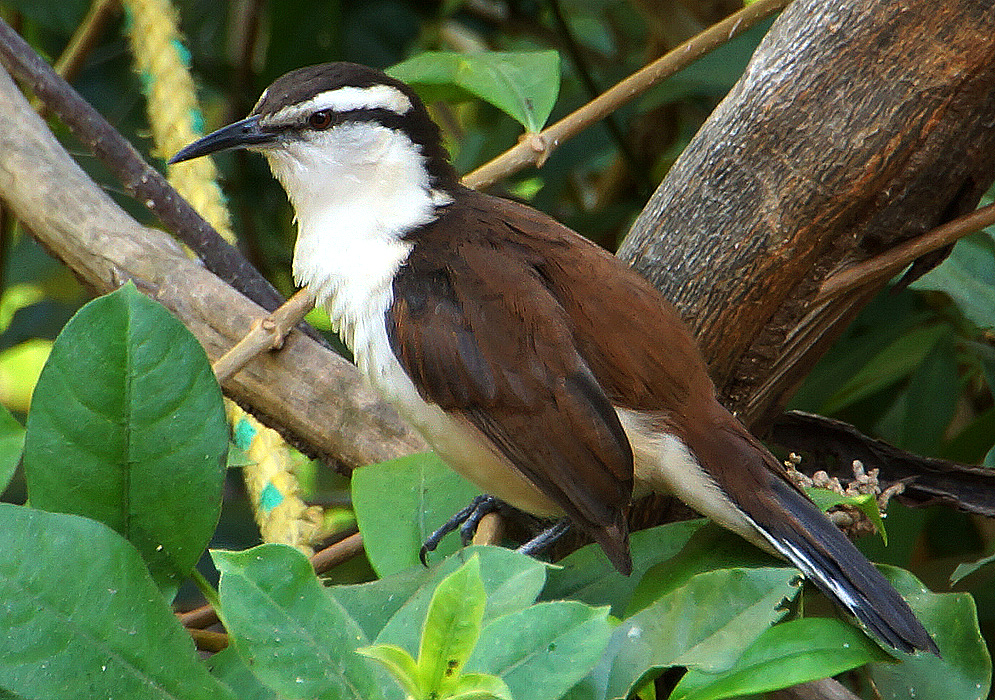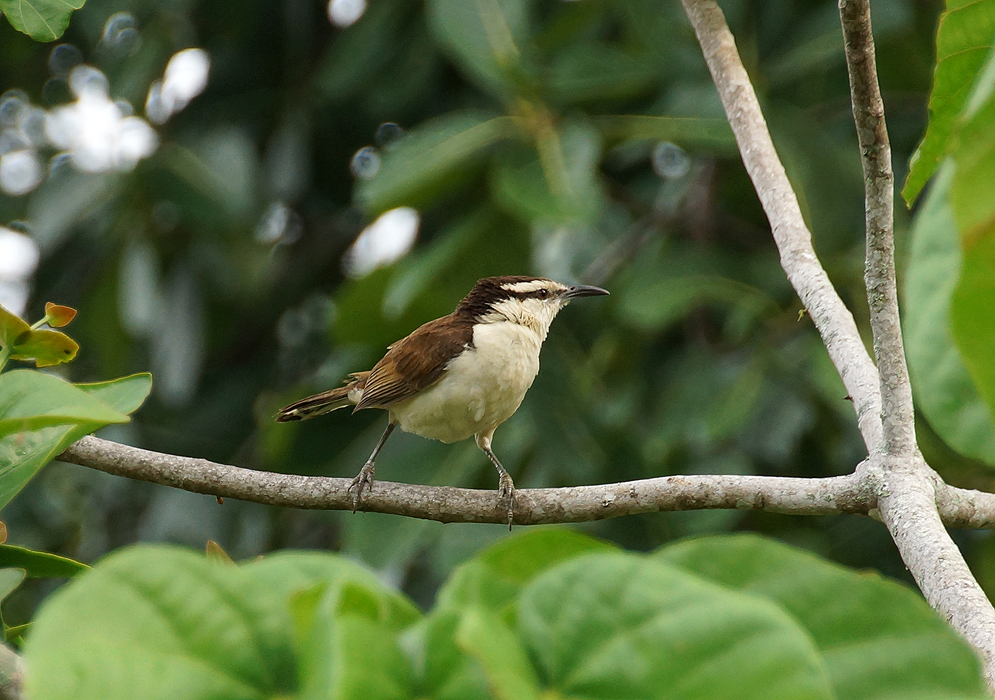This post has 11 Simple Fields-fields attached. Show fields.

The Bicolored Wren, is primarily distributed across Colombia, Venezuela, Guyana, and Brazil. Recognized as the largest South American wren and second overall in size within its family, it measures about 8.3 to 8.7 inches in length and weighs between 1.31 to 1.64 ounces. The Bicolored Wren presents a distinct appearance with dark chocolate crowns and napes, an off-white supercilium, and a dark brown tail featuring a white band near the end of most feathers. Its underparts are predominantly white. This species includes six subspecies, each with a unique distribution and habitat preference. The subspecies are found in varied regions, from northern Colombia and northwestern Venezuela to central Colombia's Huila and Tolima Departments. The Bicolored Wren adapts to environments with scattered trees and bushes and avoids dense forests and open areas. It thrives at elevations up to 6,900 feet in Colombia and 5,200 feet in Venezuela. Notably, the subspecies C. g. bicolor inhabits arid thorn scrub, while others prefer more humid regions. The Bicolored Wren forages for invertebrates and consumes vegetable matter such as berries. It has a unique breeding pattern in Venezuela, with two seasons: January to March and May to August. The species is known for cooperative breeding, where blood relatives assist in defending the nest and feeding the young. The nests are dome-shaped with a side entrance, often placed high in trees and camouflaged. The male Bicolored Wren is known for its loud, gurgling song, while the female's song includes a trill. Their calls are described as harsh and grating. The IUCN has classified the Bicolored Wren as Least Concern. Photographed in Barranquilla, Colombia.





